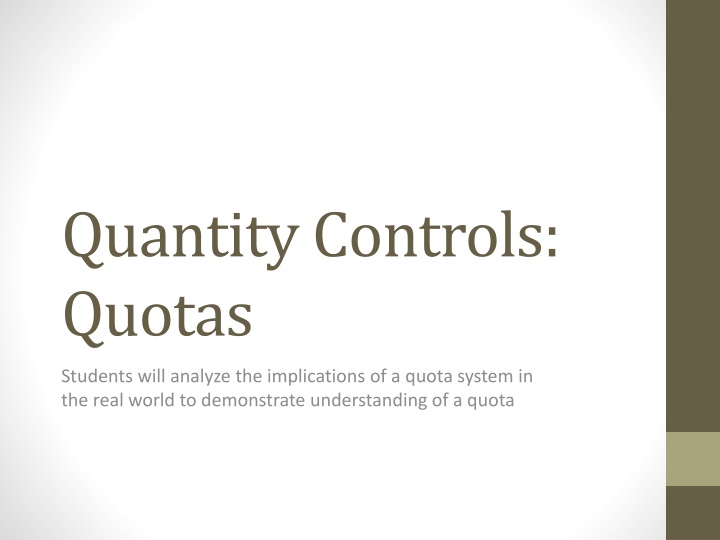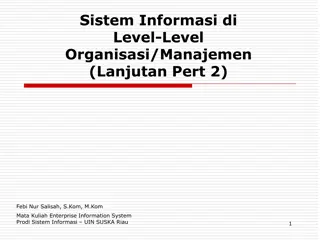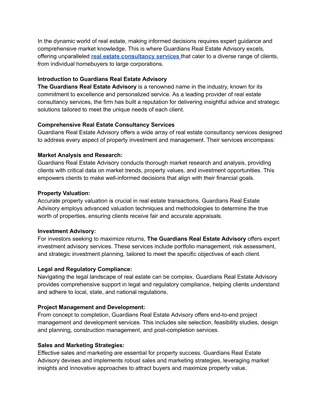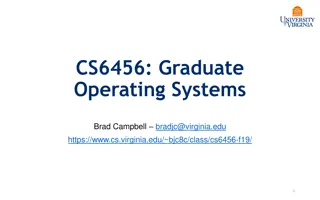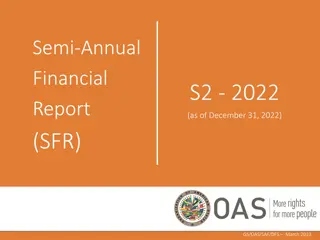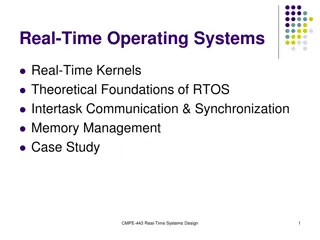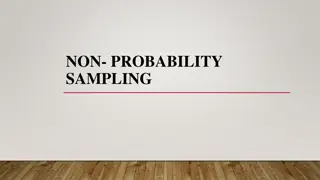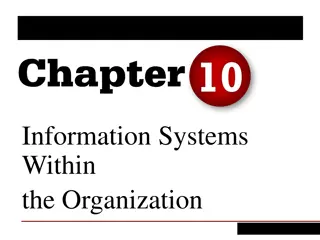Real-World Implications of Quota Systems
Students will analyze the NYC taxi medallion system and its impact on the market for taxi rides. Explore deadweight loss, quotas, and effects on supply and demand equilibrium.
Download Presentation

Please find below an Image/Link to download the presentation.
The content on the website is provided AS IS for your information and personal use only. It may not be sold, licensed, or shared on other websites without obtaining consent from the author.If you encounter any issues during the download, it is possible that the publisher has removed the file from their server.
You are allowed to download the files provided on this website for personal or commercial use, subject to the condition that they are used lawfully. All files are the property of their respective owners.
The content on the website is provided AS IS for your information and personal use only. It may not be sold, licensed, or shared on other websites without obtaining consent from the author.
E N D
Presentation Transcript
Quantity Controls: Quotas Students will analyze the implications of a quota system in the real world to demonstrate understanding of a quota
NYC Taxi Medallion 1930s = 11,787 2014 = 13,257 Issued for a fee of $10.00 per license Today, these medallions are sold for upwards of $10,000.00 per license Quota system: gov t regulation of quantity
Market for Taxi Rides in NYC Demand Price: the price at which consumers want to buy a given quantity ($5.00) Supply Price: the price at which producers will supply a given quantity ($5.00)
NYC Taxi Ride Market w/ Quote Consumers willing to pay $6.00 per ride Suppliers willing to accept $4.00 per ride HUGE impact on the market for taxi rides!
Quotas EffectsDeadweight Loss Graph shows us 2 transactions: 1) Taxi Rides ($4.00 and $6.00) 2) Medallions (the wedge ) The wedge is the quota rent range between demand price and supply price that gives us the value/rent of the license (medallion) per transaction
Quotas EffectsDeadweight Loss (cont.) Deadweight Loss: missed opportunities from not operating at equilibrium due to intervention Rule: when demand price exceeds supply price there will be deadweight loss Missed gains experienced by buyers and sellers D.L. = 1/2B H
Quick Note Just like price floors and ceilings quotas can be ineffective when the quota (quantity control) they impose is greater than equilibrium Quota>E.Q. = ineffective Price floor>E.P. = ineffective
